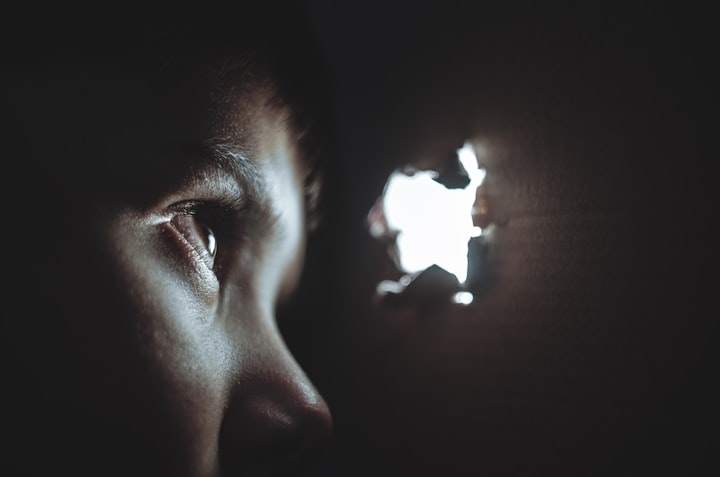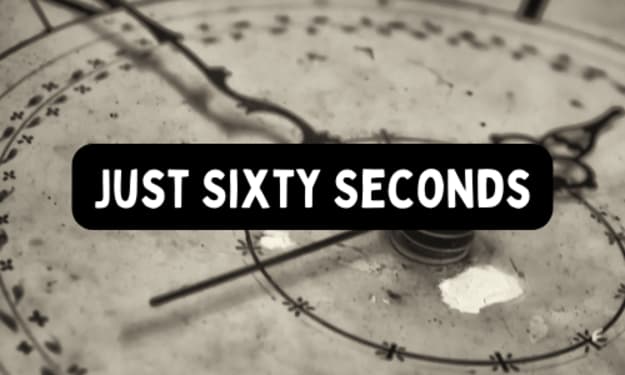
A park bench. A porch swing. A balcony. A window. Add to that list a camera lens and a movie screen, and we have a complete set of tools for humanity’s favorite pastime, people watching. We all engage in some form of observing others.
People watching gives us a better understanding of our world and those we share it with. Throughout history, artist renderings are often the manifestation of those observations.
Somewhere along the line, that casual gaze turns to mild obsession, the point at which we cannot look away. Voyeuristic tendencies become heightened with the anonymity that comes with viewing through the lens. This is the point where the artist of the twentieth century, the filmmaker, catches us at our own game, turning the lens back on us.
Why the twentieth century?
Simpler times with simpler technology produced visual challenges for filmmakers to excel. Succeeding in producing powerful imagery separated the best filmmakers from the pack.
One extraordinary film director, Alfred Hitchcock, portrayed better than any other, the thrill, and the danger of our voyeuristic ways. ‘Hitch’ successfully exploited our insatiable ‘need to know’ in two of his most famous works. By contrasting the difference between suspense and surprise, he exquisitely exposes the voyeurs’ transference from accepted guests to unwanted intruders.
Through the Looking Glass
The opening shot of Rear Window has the camera slowly moving from the inside of a room toward an open window that looks out over a courtyard. As it turns back inward to show us the sleepy image of J.B. Jeffries, ‘Jeff’, sitting in a wheelchair in his sweltering apartment, we’re made to believe we are meant to be in the room.
Rather than expected guests, we’re more like part of the furniture, as if we had always been there. Also, in one sweeping shot, the director has established a visual template for the rest of the film.
Hitchcock has given us the license to peep along, and all the tools for good voyeuristic fun are at our disposal. He has presented us with a protagonist who is also a photographer by profession. Jeff performs his job acting as a voyeur. He is so committed to his career traveling the world to shoot pictures of people in their natural environment, he will run from the chance to settle down with one of the most beautiful women on earth. Hitchcock did not choose Grace Kelly for the role of Lisa by accident.
Now, all that is needed is a scene worthy of watching, and the filmmaker hands the apartment bound Jeff more than he can handle.
This 1954, this epic tale of human nature, loneliness, hardship, and ultimately murder, are all fodder for the laid-up Jeffries to gaze upon hoping to quell his homebound boredom. Outside his apartment window, there is an array of summer heat scenarios playing out for the benefit of the viewers, Jeff, and us. Each window across the courtyard acts as a tiny movie screen within to play out each act.
Every detail for what will unfold has been meticulously mapped out in the mind of Alfred Hitchcock.
Because we’re allowed to see it all, no surprises are waiting for us around darkened corners. The players conversely are delightfully unaware of their predicaments, thus creating the tension that is suspense in its purest form. We eagerly look on with Jeff and his female friend, the lovely Lisa, as they discover a gruesome truth about a salesman living across the yard.
Jeff’s insurance company caregiver, Stella, at first represents the conscience of humanity, refusing to play along until she too is caught up in the chase to out the killer. Unwittingly, we the viewer begin to invest ourselves in the lives of everyone in the apartment block. There is a lonely woman who only wants to find love with a decent man. A dancing bombshell conversely, fights off the wolves at the door. A newlywed couple closes the blind for the rapture of honeymooning. A musician struggles to complete his opus.
In Hitchcock’s definition of suspense, we are given all the information and the tension lies in our inability to help the characters or shout out a warning. In a scene where Lisa is trapped in the salesman’s flat as he approaches down the hall, we are all helpless to assist her. Jeff and Stella watch on in terror, as do we.
Everything about Rear Window revolves around our inability to simply look away. Hitchcock‘s’ devilishly dry sense of humor even turns the tables on us momentarily in the middle of his passion play, when Jeff and Lisa suddenly become guilt-ridden for their ‘peepish’ tendencies. Will it stop them from carrying on looking out at their secret theater? Will we? Of course not, because it’s not in our nature.
You may have seen Rear Window a hundred times before, or if you haven’t, I hope you will soon. By the time you reach the climax of this picture, you will sense how trapped as the characters you are inside of its web. The mark of a master craftsman is on full display, pushing the buttons that make an audience react exactly so.
The Horror of Surprise
The artful use of suspense in Rear Window, and many other films made by Alfred Hitchcock before 1960, sets us up for the surprise of horror he inflicts on the cinema world with his next film. So much has been written and discussed of Psycho, it’s hard to know where to begin.
But, when compared to the suspenseful films of his past like Rear Window and North By Northwest, Hitchcock sent a clear message to the movie-going public that he had them in the palm of his hands. Of the many conventions that were shattered in the story of Psycho, like killing off the film’s only major star in the first reel, what stands out for me is the filmmaker’s uncanny twist on the relationship between actors and the audience.
“You know that the public always likes to be one jump ahead of the story; they like to feel they know what’s coming next. So you deliberately play upon this fact to control their thoughts” Alfred Hitchcock — Truffault/Hitchcock
Hitchcock understood his cache with audiences when he made Psycho in 1960. Using his years of suspense-filled repertoire to shake an audience by its figurative shoulders, Hitchcock introduced a new realm of film viewing to an unsuspecting public.
It starts right from the opening shots of the film. He cleverly establishes place, Pheonix, and more importantly time, 2:43 in the afternoon, before sweeping us in an open hotel window like some uninvited fly. The voyeurism of film viewing takes on a seedier sensibility. We don’t belong here he tells us, and come to think of it, neither do the characters. Lovemaking in the afternoon? In a hotel room out of wedlock? In 1960? You get the picture.
Now that the filmmaker has established that we are along for a ride we don’t belong on, all bets are off, and Hitchcock uses this to supreme advantage.
In his work before Psycho, the espionage romp, North By Northwest. the lead character played by Cary Grant only appears to die of a gun wound. Hitchcock toys with his audience, giving us an inkling to what may be in store next.
The famous 78 shots and 52 cuts in Psycho’s shower scene have been dissected and broken down countless times. Everything leading up to that horrific moment is a testament to the mastery and awareness of one of cinema’s greatest artists.
When you view Psycho for the first time, you subconsciously sense an uneasiness as the story develops, but you don’t know why. There is something unnatural about this scenario, beginning with a heroine who has committed a criminal act. This is 1960, remember. Something doesn’t quite seem right. From the motorcycle cop with the mirrored sunglasses to the heavy downpour that forces Marion off the road, we’re given an idea that something sinister lurks, but we don’t where or how. Hitchcock has withheld valuable information. This is so unlike what we know and expect from this filmmaker.
By the time we reach the dinner scene with Marion Crane and Norman Bates, it suddenly occurs to us that Marion and Norman aren’t the only ones being watched. Normans’ taxidermy birds are staring back at us with ominous, cold eyes, as if to say, “Be careful what you wish for or want to see”.
When the exhausted Marion decides to retire for the night, Hitchcock finally offers a detail we’ve all been waiting for. Norman pulls back a framed painting on the wall to reveal the peephole through which he watches his guests. We might believe this story is about to involve a daring escape by our heroine. Instead, it’s a clue that there will be a price to pay for our voyeuristic ways.
The audience is primed, and the maestro pulls the strings. We watch Marion enter the pure white bathroom, a hallmark of Hitchcock movies, and she prepares to enter the shower. The paper being flushed down the toilet, another first in cinematic history, is a symbolic harbinger for the next two minutes of Marion Crane’s existence. She opens the curtain and steps into the tub.
Horror demands the element of surprise as much as suspense depends on the audience’s knowledge of events. The first cut inside the shower is, yes I’m going to say it, GENIUS.
We are looking up at the showerhead, spraying water down around the screen. Hitch puts us inside the shower with Marion Crane. There’s no escape now and we still don’t know what will happen next. The trap closes shut with the pull of the shower curtain, and now we’re primed for the shock of our lives.
After years of spoon-feeding his audiences with enough information to fear for the hero’s safety, Alfred Hitchcock plays the cruel and intelligent joke of making us suffer along with Norman’s victim. The filmmaker announces to the world, we are no longer safe when we peer onto that screen. As patrons gasped in horror, and some even ran screaming from theaters, a new era of film viewing dawned on the cinema world.
Then, Hitchcock puts a stamp on his message as Marion’s body hits the bathroom floor. Her lifeless right eye stares back at the viewer as a grim reminder of the potential cost to the voyeur. The camera twists in the same manner as the blood flowing down the drain, but the twist also tells us that nothing will be the same again.
Filmmakers the world over, reacted much the same way the ‘rock and roll’ world did when Sargeant Pepper dropped. The gauntlet had been dropped, and the great master had controlled the scenario. Alfred Hitchcock created realistic terror without ever drawing blood. Every shot drives the implied violence of the murder.
Hitchcock opened the pandora’s box of visually explicit cinema, and he served notice to the movie-going public that there was no longer any sacred ground.
Rear Window and Psycho are so much more than mere musings of a mischievous mind. Each is a tapestry formed in filmic excellence. I hope you will take the opportunity like I, to watch them again for the first time.
This story originally appeared on Medium by Stuart Englander
I hope you enjoyed reading it.
All tips are gratefully accepted for my future musings.
About the Creator
Stu E
Every Life is a Story-Every Story has a Life. I love to write stories to inspire. Biographies, film reviews, and a touch of humor. Life is for learning, always.






Comments
There are no comments for this story
Be the first to respond and start the conversation.